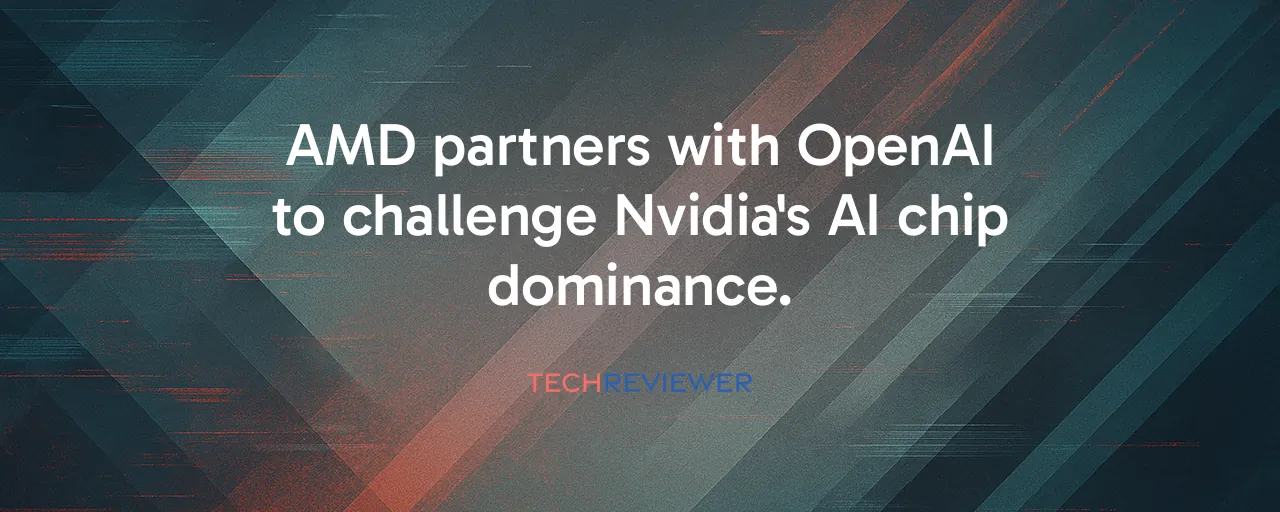A New Player Steps Up
AMD's recent partnership with OpenAI marks a bold step in its quest to challenge Nvidia's grip on the AI chip market. Under CEO Lisa Su's leadership, AMD has spent the past decade rebuilding its reputation, first by outmaneuvering Intel in the CPU market and now by aiming for a slice of the lucrative AI accelerator space. The deal positions AMD as a key supplier for OpenAI's growing computational needs, signaling its ambition to compete in a field where Nvidia holds an estimated 80-90% market share.
The stakes are high. Industry projections estimate AI infrastructure spending could hit $4 trillion by 2030, driven by the explosive demand for chips that power large language models and machine learning tasks. AMD's Instinct MI350 series, designed to rival Nvidia's Blackwell architecture, promises high memory bandwidth and energy efficiency, critical for data-hungry AI workloads. Yet, Nvidia's entrenched position, bolstered by its CUDA software ecosystem and annual hardware updates, makes this a steep climb. The OpenAI deal gives AMD a foothold, but the road ahead is anything but easy.
Learning From the Past
AMD's current push echoes its successful campaign against Intel. When Lisa Su took the helm in 2014, AMD was struggling, losing ground to Intel's dominance in server and desktop CPUs. Su's strategy centered on the Zen architecture, launched in 2017, which delivered performance that matched or surpassed Intel's offerings. By capitalizing on Intel's manufacturing stumbles, AMD captured significant market share, building credibility with cloud providers like Microsoft Azure and Amazon Web Services. This success laid the financial and relational groundwork for its AI ambitions.
The parallel isn't perfect, though. Nvidia's dominance in AI chips stems not just from hardware but from its CUDA platform, a software ecosystem that developers rely on for building and optimizing AI applications. AMD's ROCm software, while improving, struggles to match CUDA's maturity and widespread adoption. The lesson from AMD's CPU victory is clear: technical excellence alone isn't enough; ecosystem strength and customer trust matter just as much. AMD's OpenAI partnership, which includes OpenAI taking an equity stake in AMD's infrastructure deployment, mirrors the kind of strategic alignment that helped it win over cloud providers in the CPU market.
Nvidia's Counterpunch
Nvidia isn't standing still. Its own deal with OpenAI, announced last month, involves deploying 10 gigawatts of its systems across data centers, dwarfing the scale of AMD's agreement. Nvidia's Blackwell architecture, launched in late 2024, offers cutting-edge performance for AI training, backed by a robust software stack and networking solutions like NVLink and InfiniBand. These tools make it easier for companies to scale massive AI workloads, cementing Nvidia's position as the go-to choice for hyperscalers and AI developers.
The contrast between the two deals highlights their strategies. Nvidia's agreement focuses on sheer computational power, leveraging its market-leading GPUs without ceding equity. AMD, meanwhile, uses its partnership to gain visibility and validation, betting on its MI350 series' chiplet design, which builds on the memory capacity advancements seen in the MI300X to handle memory-intensive tasks. While Nvidia's scale gives it an edge, AMD's focus on cost-effective, high-memory solutions appeals to price-sensitive customers and those wary of relying on a single supplier.
The Software Battleground
Beyond hardware, the competition hinges on software. Nvidia's CUDA platform, refined over decades, offers a wealth of tools, libraries, and community support that streamline AI development. Developers can tap into extensive tutorials and optimized frameworks, reducing time and effort. AMD's ROCm, though open-source and improving, faces challenges in matching this depth. For instance, many AI models are optimized for Nvidia's Tensor Cores, creating subtle performance advantages that lock developers into its ecosystem.
This software gap poses a hurdle for AMD. Convincing developers to switch requires not just competitive hardware but a seamless experience. AMD's partnerships with cloud providers, built through its EPYC CPU success, help by bundling CPU-GPU solutions for integrated deployments. Still, enterprises deploying mission-critical AI systems often stick with Nvidia's proven platform to avoid risks. AMD's challenge is to make ROCm a compelling alternative, potentially by focusing on open standards that let developers move models across platforms without retooling.
What's at Stake for AI's Future
The AMD-Nvidia rivalry extends beyond corporate wins to broader implications. Competition could lower AI infrastructure costs, making advanced tools accessible to startups and research institutions currently priced out by Nvidia's premium GPUs. Energy efficiency also matters, as data centers consume vast amounts of power, raising environmental concerns. AMD's chiplet-based designs and Nvidia's performance-per-watt improvements both aim to address this, but the winner will shape how sustainable AI growth becomes.
OpenAI's dual partnerships reflect a broader trend: AI companies want to avoid depending on one chip supplier. This diversification push benefits AMD, whose credibility from CPU wins and OpenAI's endorsement make it a viable alternative. Yet, Nvidia's ecosystem and rapid innovation pace keep it ahead. The outcome will influence not just market shares but how quickly and equitably AI capabilities spread, impacting everything from autonomous vehicles to scientific research.
